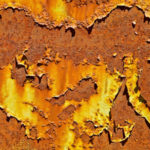
Nanocrystalline Silver Alloy Contact Finishes in Electronic Applications
Dr. Bob reviews two recently published papers to draw conclusions on the possible use of nanocrystalline silver alloy contact finishes in electronic applications. In my previous article, in which I mentioned two recent papers* on the nanocrystalline silver alloys of silver-tungsten (AgW) and silver-palladium (AgPd) and their use as contact finishes, I highlighted the potential benefits these alloysRead More











